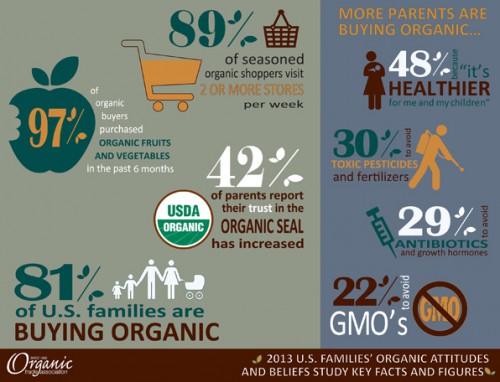After a long winter, it's time for spring-cleaning. Unfortunately, the ever-expanding arsenal of home cleaning products now includes several dangerous weapons, loaded with strong, artificial colors and fragrances and harsh cleansing agents like bleach, ammonia and acids. These chemicals can produce indoor air pollution by off-gassing toxic fumes that can irritate eyes and lungs. (Children and pets are most at risk.) Many cleaners also contain unnecessary antibacterial agents (pesticides, technically), that can actually make bacteria stronger, and more resistant to antibacterial drugs.
And commercial cleansers cost a lot. So make your own! Even the biggest messes and toughest stains can be attacked effectively with baking soda, borax, lemon juice and other simple ingredients.
PORCELAIN AND TILE
Keep your bathrooms and kitchen tile spotless and hygienic with these natural cleansers:Baking Soda and Water: Dust surfaces with baking soda, then scrub with a moist sponge or cloth. If you have tougher grime, sprinkle on some kosher salt, and work up some elbow grease.
Lemon Juice or Vinegar: Got stains, mildew or grease streaks? Spray or douse with lemon juice or vinegar. Let sit a few minutes, then scrub with a stiff brush.
Disinfectant: Instead of bleach, make your own disinfectant by mixing 2 cups of water, 3 tablespoons of liquid soap and 20 to 30 drops of tea tree oil. It's easy!
KITCHEN COUNTERS
The room where food is prepared, stored and often enjoyed requires constant vigilance. Splatters, spills and errant crumbs can build up and collect out of sight, encouraging harmful bacteria.Baking Soda and Water: Reclaim counters by sprinkling with baking soda, then scrubbing with a damp cloth or sponge. If you have stains, knead the baking soda and water into a paste and let set for a while before you remove. This method also works great for stainless steel sinks, cutting boards, containers, refrigerators, oven tops and more.
Kosher Salt and Water: If you need a tougher abrasive sprinkle on kosher salt, and scrub with a wet cloth or sponge.
Natural Disinfectant: To knock out germs without strong products, mix 2 cups of water, 3 tablespoons of liquid soap and 20 to 30 drops of tea tree oil. Spray or rub on countertops and other kitchen surfaces.
WINDOWS AND MIRRORS
Instead of those harsh-smelling sprays, try this highly effective, simple solution for windows and mirrors:White Vinegar, Water and Newspaper: Mix 2 tablespoons of white vinegar with a gallon of water, and dispense into a used spray bottle. Squirt on, then scrub with newspaper, not paper towels, which cause streaking.
If you're out of vinegar or don't like its smell, you can substitute undiluted lemon juice or club soda.
CARPET AND RUGS
Keeping carpets clean is less daunting than you might think, even after a season of tracked-in dirt and salt.Beat Those Rugs: Take any removable rugs outside and beat the dust and hair out with a broom.
Club Soda: You've probably heard the old adage that club soda works well on carpet stains. But you have to attack the mess right away. Lift off any solids, then liberally pour on club soda. Blot with an old rag. The soda's carbonation brings the spill to the surface, and the salts in the soda thwart staining.
Cornmeal: For big spills, dump cornmeal on the mess, wait 5 to 15 minutes, and vacuum up the gunk.
Spot Cleaner: Make your own by mixing: 1/4 cup liquid soap or detergent in a blender, with 1/3 cup water. Mix until foamy. Spray on, then rinse with vinegar.
To Deodorize: Sprinkle baking soda or cornstarch on the carpet or rug, using about 1 cup per medium-sized room. Vacuum after 30 minutes.
WOOD FLOORS
Hardwood floors are beautiful, hygienic, long lasting and add value to your home. They are easy to vacuum, but don't do well with wet mopping. So how do you restore their natural glow without roughing them up?Vinegar: Whip up a solution of 1/4 cup white vinegar and 30 ounces of warm water. Put in a recycled spray bottle, then spray on a cotton rag or towel until lightly damp. Then mop your floors, scrubbing away any grime.
SAFER OVEN CLEANING
Conventional oven cleaning chemicals are loaded with toxic ingredients, including ethers, ethylene glycol, lye (sodium and potassium hydroxide), methylene chloride and petroleum distillates. The products are harmful to skin and eyes, and the fumes are unhealthy. Instead, go natural!Baking Soda and Water: Coat the inside of your dirty appliance with a paste made from water and baking soda. Let stand overnight. Then, don gloves and scour off that grime. Make spotless with a moist cloth.
CLOGGED DRAINS
A stopped up sink or tub is a real hassle, but pouring toxic chemicals like Drano on them isn't so wise. Not only will that pollute our waterways, but the products can cause chemical burns and are highly dangerous if ingested. Do you really want that in your home?Baking Soda and Boiling Water: Pour 1/2 cup of baking soda into the problem drain, followed by 2 cups of boiling water. If that isn't doing it for you, chase the baking soda with a 1/2 cup of vinegar and cover tightly, allowing the vigorous fizzing of the chemical reaction to break up the gunk. Then flush that with one gallon of boiling water.
ANTIQUE LINENS
Whether you have fine family heirloom pieces or something with character you picked up at an estate sale for a song, you're eventually going to have to wash your antique linens. Even with advanced settings on today's washing machines, you still may want to address fragile fabrics by hand.Sunlight: What could be easier than sanitizing and removing stains... with sunlight! (Just don't do it too often with fragile pieces, because they can start to break down). Simply lay your old lace, curtains and other fine linens on the grass in the sun for a few hours. Dirtier pieces can be dampened first.
Boiling: If that doesn't do the trick, fill a pot with water and bring to a boil on your stovetop. Drop in linens and let steep until stains lift.
Detergent and Borax: Mix dishwasher detergent and borax together until you get a thick rubbing paste. Rub into soiled linens, then rinse clean.
Peroxide: If you have stubborn stains, try spraying them with peroxide, then rinsing with water.
SILVERWARE
Commercial silver polish contains toxins, and manufacturers recommend you don't leave on skin too long. Do you really want something like that spread over your flatware?Silver
Aluminum Foil, Boiling Water, Baking Soda and Salt: Keep your sterling shined with this seemingly magic method. Line your sink or a bucket with aluminum foil, and drop in tarnished silver. Pour in boiling water, a cup of baking soda and a dash of salt. Let sit for a few minutes. The tarnish will transfer from the silver to the foil.
Toothpaste: If you can't immerse your items or are otherwise inclined to polish by hand, rub tarnished silver with toothpaste and a soft cloth. Rinse with warm water and dry. Instead of toothpaste you can substitute a concoction made of 3 parts baking soda to 1 part water.
Copper
Ketchup: To keep your copper pots, pans and accents looking bright and shiny, try rubbing with ketchup.
[via The Daily Green]



















































